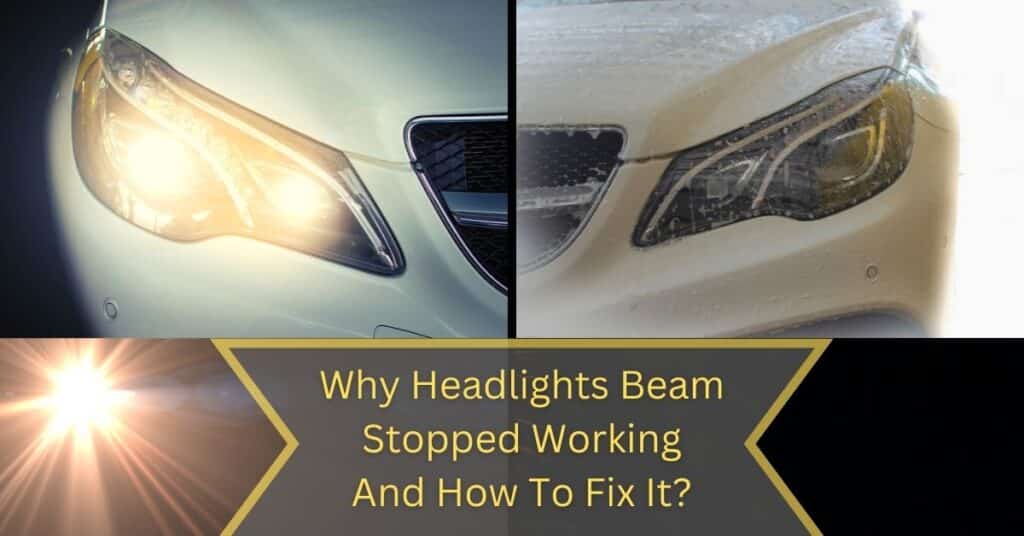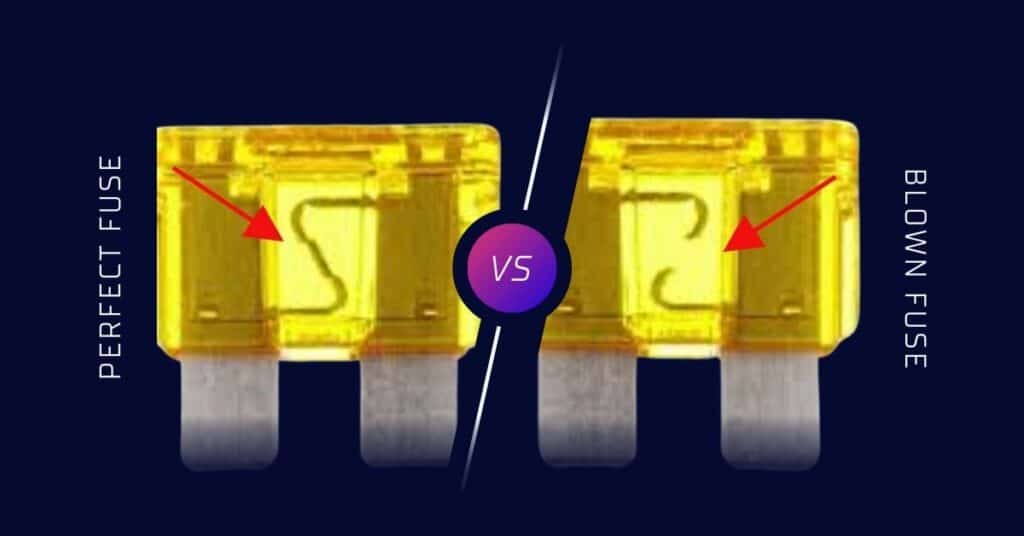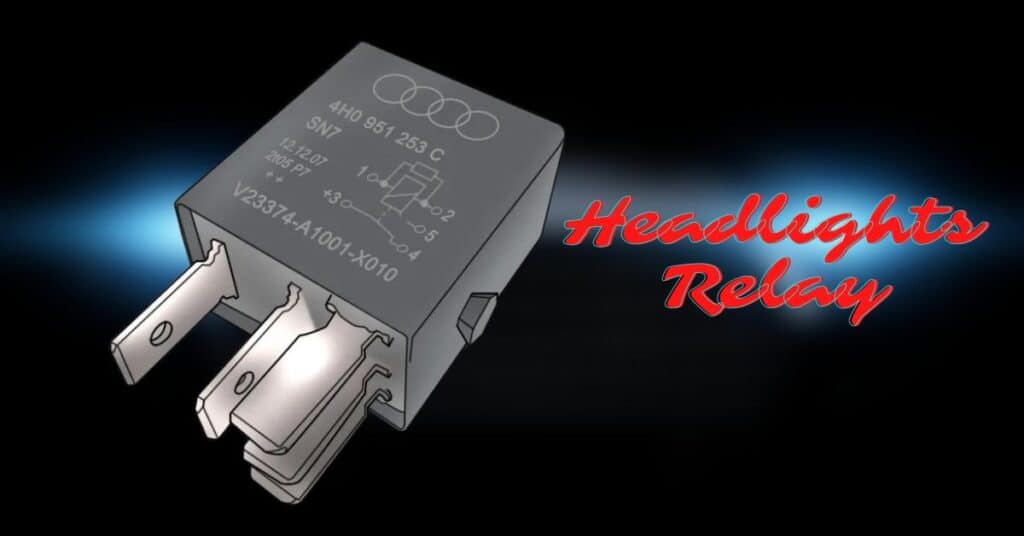Your car’s headlights typically comprise four basic components: the bulb, a relay, a fuse, and a switch. And as you might expect, any one of these components can stop working, causing the entire headlight to stop working.
Usually, when your headlight beams stop working, it’s because of an electrical failure or a physical defect. What are some of the common causes of headlight beam failure?

Causes of Headlight Failure: Why Headlights Beam Stopped Working
The causes of headlight beam failure vary from electrical to physical defects. Knowing the actual cause is important in fixing the problem. Here are some common causes of headlight beam failure.
Defective or Burned-out Bulbs
Your headlights’ bulbs can be halogens, Xenon, or LED bulbs. Halogen bulbs are older than the other two and are capable of burning out. You can easily replace burned-out halogen bulbs.

Xenon and LED bulbs, on the other hand, are incapable of this, though, as they do not use heat. However, these bulbs can get damaged and when they do, replacing them is also easy.
A problem with the bulb may be the reason why your headlights are not working. This is especially if it’s one headlight that is not working. Thus if you notice either the high beam or low beam headlights aren’t working, the cause may be a defective bulb.
Faulty Or Blown Fuse
If the headlights are still not working after replacing the bulb or if more than one headlight is not working, the issue could be a faulty or blown fuse. To test if the problem is the fuse, remove the fuse that corresponds to the headlights that aren’t working.

Then replace it with one that you know is working. If the headlights work, then you know the cause is the blown fuse. Replacing the fuse is easy enough.
Faulty Relay Or Switch
Electrical power from the battery is transmitted to the headlights via a relay. If this relay is damaged, then the headlights will not turn on. In some vehicle models, high and low beams have different relays.

Thus if you notice that the high beams are working but the low beams aren’t or vice versa, the issue may be with the relay. The obvious solution is to replace the relay of the nonfunctioning beams.
The issue may also be caused by a faulty switch in either the high beams or low beams, depending on which beams aren’t working. Like with the relay, the solution is to replace the switch.
The Lifespan Of Headlights Beam: How Long Do Headlight Beams Last
Headlight beams become dimmer with age. So how long should you expect your headlights to last before they start dimming due to age? The lifespan of headlights will depend on the type of bulbs used.
Halogen Bulbs
These are the oldest types of bulbs used on headlights. They work by the use of a tungsten filament that gets heated to produce light. Over time this tungsten filament burns away until it is incapable of producing light.
As a result, halogen bulbs typically last anywhere from 500 hours to 1000 hours. They have the shortest lifespan of any bulb type but are also the cheapest.
Xenon Headlights
These are similar to halogen bulbs in that they use a tungsten filament. But unlike halogen lights, xenon bulbs use Xenon as an inert gas, which surrounds the filament. This gas produces a bright white light in conjunction with the filament.
As a result, they tend to have a longer lifespan than traditional halogen bulbs. In normal conditions, xenon headlights can last for up to 10,000 hours,
High-Intensity Discharge
HID lights use electrodes similar to spark plugs. Electric power is sent between the two electrodes discharging the light. Similar to xenon headlights, these also produce a bright white light.
However, they do not last as long, and you can expect to get around 2,000 Hours.
LED lights
These are perhaps the most advanced type of bulbs. They also have the longest lifespan. These bulbs use diodes to produce light when electrical current passes through them. They are more efficient than the other types and can last up to 30,000 Hours.
Effect of Defective Headlight Components on Headlight Beams
A defective headlight relay or switch will cause the headlights not to work. If the relay is faulty, it cannot transmit electric current to the bulbs. With no electric current flowing to the bulbs, they will not light. The same goes for the switch and other components.
Why Only Low Beams Headlights Aren’t Working
You may find yourself in a situation where the low-beam headlights are not working while the high beams are. This can be due to several reasons.
A Faulty Headlight Socket
Headlight bulbs are plugged into place using sockets. It is through the socket that electrical current passes to the bulb. If the socket becomes damaged due to corrosion or something else, your headlights will not work well.
If you notice the low beams aren’t working, it may be due to the defective sockets of the low beam bulbs. The high beams are usually on a different circuit and will not be affected by this.
Wiring Problems
As mentioned, the low and high beams are usually on different circuits. Thus, if the low beams’ wiring is compromised, it will manifest in the low beam headlights not working. Use a voltmeter to check if power is being relayed to the low-beam headlights.
Bad Low Beam Relay
Most vehicles have separate relays for the low beams and high beams. When the low beam fuse is faulty, only the low beams will stop working. However, if the fuse is blown out, there is a high chance that all headlights will stop working.
Thus if only the low beams aren’t working, the issue may be a faulty low beam fuse. Replacing the fuse should fix the problem.
Why Only one high beam headlights not working: Causes of High Beam Failure
What about when both high beams stop working? Several things can use your high beams to stop working without affecting the low beams.
Defective Automatic Sensors
Today, most modern cars have automatic sensors that detect when more light is needed and automatically activate the high beams. If your vehicle has this kind of sensor, they become incapable of activating the high beams if they are defective.
The solution will be to activate the high beams manually. But ultimately, it will be wise to get the sensors inspected.
Bad Switch
There is usually a manual switch you activate to turn on high beams. If this switch is damaged, you will be unable to activate the high beams. In most cases, if the switch is bad, it will feel loose or will not turn the same way it used to.
Replacing this switch will be the solution to get your high beams back on. You can do this yourself if you know your way around a car or have a technician replace it.
Blown Fuses and Faulty Relays
Like low beams, the reason your high beams aren’t working may be a blown fuse or relay. If the high beam relay is damaged, the high beams will not work. The same goes for when the high beam fuse is blown.
Headlight Maintenance Tips
- Clean them frequently: Dirt, moisture, and other debris can accumulate on the headlight panel and inside. The debris will minimize the headlight’s brightness. More importantly, when moisture gets inside, it can cause critical components to corrode. This can reduce the lifespan of the headlights and cause issues.
- Inspect All headlights when one goes out: When you notice one headlight is not working, it may be due to a bad bulb. However, it can be an indicator of a bigger issue. Thus it is essential to inspect the other headlights in addition to fixing the one that is out.
- Replace Both Bulbs: if you notice one headlight isn’t working, it may be a good idea to replace the bulb that is working as well.
Last Updated on May 7, 2025 by Rifen
